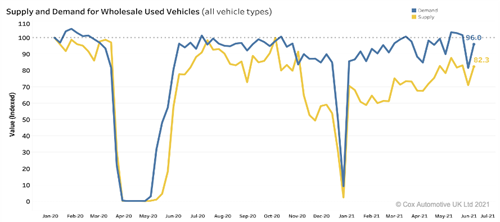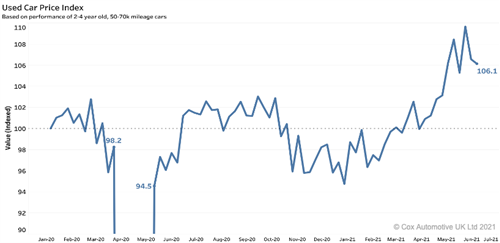Supply chain constraints could impact the new vehicle market until 2022
Vehicle manufacturer supply chain issues continue, with raw material shortages and key components – including semiconductors, aluminium, and rubber - all trading at a premium. This is lengthening new vehicle production cycles ever further and will have a knock-on impact on the used market as the volume of stock reduces. We don't expect the full financial repercussions of the tier one supply chain issues to hit until the fourth quarter of 2021, and they certainly won't be fully resolved until 2022.
New car registrations continue to face challenges because of supply chain constraints. Although May ended with a +674.1% (156,737) increase compared to 2020 (20,247), this is a misleading picture due to the severity of the first lockdown last year. The more telling comparison is with May 2000 – 2019 averages (176,493), which shows the current market as being -11.2% down.

Supply and demand drive positive wholesale performance
The lack of supply entering the wholesale market, coupled with increased demand following the reopening of showrooms, continues to drive positive wholesale performance. For the second month running, first-time conversions are above 80% and average wholesale sold prices remain at pre-pandemic levels (currently £5,801).
Demand recovered after a sharp dip in the final weeks of May caused by slowing volume availability, highlighting the volatility of the current market. As throughout the first quarter of 2021, demand is outstripping supply.

Retailers adjust stock profiles and focus on retaining profit margins
The lack of quality stock is causing many dealers to readjust their focus towards retaining profit margins at all cost. For as long as demand for quality retail vehicles still exists, dealers will continue to purchase vehicles outside of their usual stock profile to ensure their forecourts remain full. This has caused both average wholesale age (102.3 months, +4.9% MoM) and mileage (69,011, +5% MoM) to increase even further.
